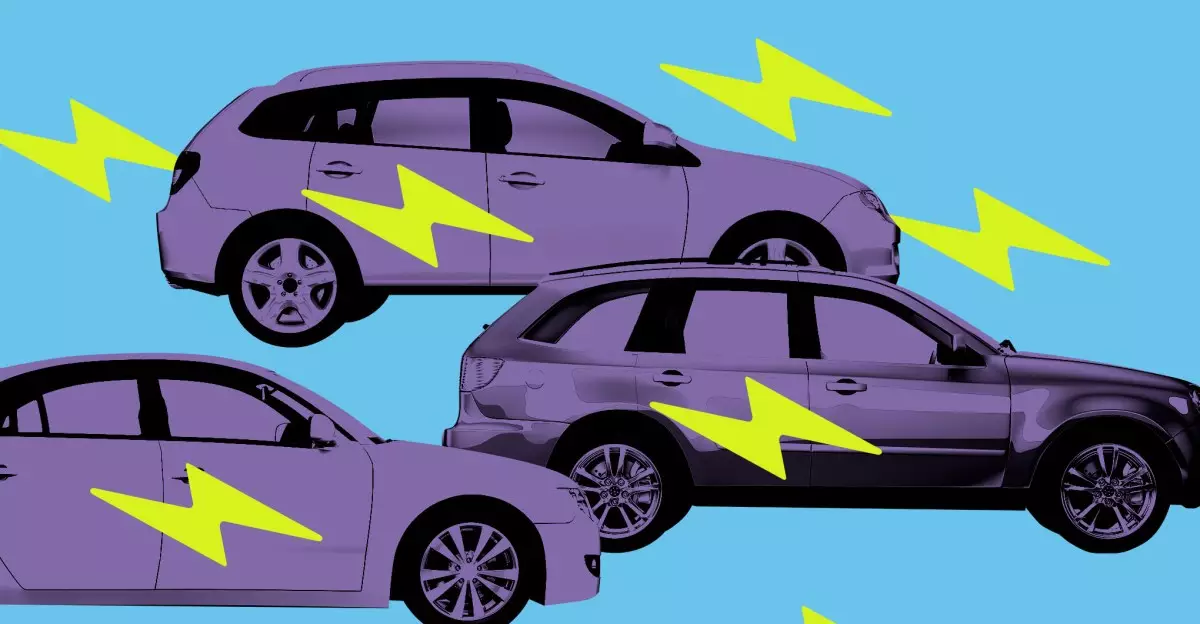In a world where technology intricately weaves into the fabric of our daily lives, the conversation around road safety is taking a critical turn. A ground-breaking study by the AAA Foundation for Traffic Safety highlights the potential of smartphone applications in transforming driving habits. The notion of real-time monitoring often raises eyebrows; however, the findings of this latest research suggest that embracing such technology can catalyze a dramatic shift towards safer driving conditions. As we dive deeper into this topic, the powerful influence of feedback and accountability becomes evident, questioning whether our reluctance to accept monitoring is hindering our capacity to foster safer driving environments.
Understanding the Concept of Usage-Based Insurance
The study mirrors concepts found in usage-based insurance (UBI) programs, which have gained traction in recent years. In essence, these programs track driving behaviors such as braking patterns, acceleration, and speed—essentially the nuances of driving that determine risk levels. Unlike traditional insurance methods that often rely on static data and demographic factors, UBI utilizes dynamic performance metrics to tailor premiums uniquely to individual behaviors. While these programs can foster safer driving through financial incentives, they often collide with the public’s aversion to being constantly monitored.
Participants in the AAA study were segmented into various feedback groups, each receiving different levels of monitoring. Remarkably, the athletes of the road, so to speak, displayed significant improvements in their driving behaviors simply from the awareness spawned by real-time tracking. This spontaneous transformation suggests that perhaps, the motivation to earn a better performance rating as well as savings on insurance could catalyze societal change.
Behavioral Change Through Data Feedback
One of the most striking outcomes from the study was the impact of feedback on modifying driver behavior. Participants who received weekly insights saw notable reductions in risky behaviors: 13% in speeding, 21% in harsh braking, and 25% in rapid acceleration. Such numbers are not mere statistics; they encapsulate lives potentially saved through simple behavioral adjustments. This evidence necessitates a paradigm shift in how we perceive driver feedback—not merely as a tool for punishment, but as a catalyst for positive change.
Interestingly, an exploration of individuals’ preferences for motivation revealed surprising insights. A significant percentage of participants expressed openness to earnings as a motivator rather than punitive measures. This revolutionizes how we think about driver incentives, indicating that intrinsic rewards can yield more profound and lasting changes than traditional consequences.
Addressing the Fear of Surveillance
Despite these promising findings, the study illuminates a paradox: individuals are often reluctant to embrace real-time monitoring due to an ingrained fear of being watched. The idea of being constantly scrutinized can lead to anxiety that compromises one’s performance. It is a prevailing societal belief that the perception of ‘big brother’ watching might result in defensive, rather than reflective, driving. The implications of this fear extend beyond personal discomfort; they challenge the very framework of how we approach safety in transportation.
The reluctance to adopt UBI programs despite their demonstrated benefits is a prime example. As reported, only a small fraction of drivers are willing to participate, even while understanding that it might lead to fructifying personal and social safety outcomes. This sentiment reveals not just a perception issue but a fundamental resistance to change; an ironclad belief in personal autonomy versus the potential benefits derived from collaborative monitoring.
Continuing Change Beyond Monitoring
The compelling twist, however, is found in the study’s aftermath. Drivers consciously improved their behaviors not only during the active monitoring period but also sustained this shift in the absence of feedback. This persistence suggests that real-time monitoring can instill lasting habits in individuals, reinforcing the idea that positive reinforcement breeds lasting change rather than fear-induced compliance. The words of Jake Nelson from the AAA aptly encapsulate this feeling: “Positive reinforcement, not just punitive measures, can lead to safer driving habits that can save lives.”
The sheer number of fatalities in vehicle crashes, rising above 40,000 in one year alone, underlines the urgent need for innovation in how society educates drivers. As behaviors shift towards safer practices through methods like real-time monitoring, the stakes couldn’t be higher. We stand at the precipice of a new driving culture, where technology and reinforcement could harmonize to save lives.
Embracing the Future of Driving
As we navigate this evolution in driving behavior, one can’t help but wonder: why not embrace the technology that allows us to better ourselves? Just as we rely on smartphone applications to track our health, perhaps it’s time we also hold ourselves accountable on the road. Fundamentally, unlocking safer roads may simply require the willingness to reassess our relationships with technology and change. Embracing feedback rather than shunning it could redefine our driving experiences and contribute significantly to road safety. As the data continues to speak, could this serve as the impetus for a shift in societal norms regarding driving accountability and safety technology? It is a question to ponder as we look ahead to the future of transportation.

